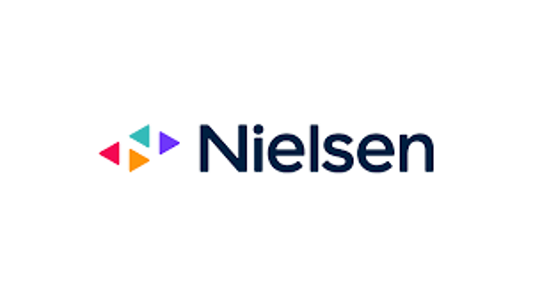한국 포스트 TV시대, 느린 성장을 준비하라(Korea, Post-TV era requires imagination to prepare for slower growth)
"Post-TV era requires imagination to prepare for slower growth"
The crisis in South Korea's broadcast media market is likely to continue into 2024. Legacy media markets have stagnated and streaming services, which seemed to be the future of media, are expected to slow down.
This is the so-called slow growth trap. Outdated regulations and an economic downturn are two of the biggest reasons why the South Korean broadcast media market is stuck in a slow growth trap. Regulations are holding legacy media back, and audiences with lighter pockets are investing less in paid streaming.
For Korean broadcast, media, and content providers to survive in this era of slow growth, they need to be imaginative enough to look at the industry, users, and institutions from a new perspective. A comprehensive effort is needed to build new growth engines for legacy media and new business models for future media.
At the "2024 New Beginnings - Changes in the Media and Entertainment Ecosystem" seminar held at CES2024 on January 10, 2024, Dr. Changhee Noh, Director of the Digital Industry Policy Institute, spoke about key issues and prospects in the Korean media and content sector, defining the current Korean broadcast media market as "an era of slow growth amidst crisis and transition".
Mr. Noh called for fundamental regulatory reforms that reflect environmental changes and corporate efforts that reflect changes in content usage trends as solutions to overcome the era of slow growth.
The seminar was co-hosted by leading Korean media companies and research institutes specializing in the media and entertainment industry, including Direct Media Lab, Digital Industry Policy Institute, and The Core.
The seminar featured industry leaders and experts discussing the revolutionary impact of artificial intelligence (AI) on media and entertainment. Key topics included the relationship between AI and media content, changes in streaming services and content distribution, and the industry-wide impact of generative AI.
In his presentation, Mr. Noh discussed the changing media trends (market, usage, and policy perspectives) in Korea, including the decline of legacy media, changes in the media environment due to increased streaming usage, slow growth of the OTT market, and the impact of generative AI.
Key Insights
Diversification of Fee Structures for Platforms like Netflix and YouTube: In examining the evolving landscape, Noh explains how the predominant shift is towards increased consumption of long-form content, specifically in the era of super media. Users are now more conscious of cost-effectiveness, evaluating the value of time and resources invested.
Noh cited the popular term “streamflation” to discuss the diversification of fee structures, alluding to the current trend where platforms like Netflix and YouTube strategically balance fee increments with enticing ad-based models to attract users.
OTT Ubiquity and Industry Concerns: The presentation acknowledged the universalization of OTT usage and how despite this, the dramatic increase is limited, and users, particularly in Korea, remain hesitant to spend significant amounts on content. The future of theaters faces challenges, with the Korean market not fully recovering to pre-COVID levels. This decline could impact Korea's overall competitiveness in the content industry, given that talent and creativity often originate from the film sector.
While some may define this new era as the end of television, Noh argues that it is “rather evolving into a post-television era.” The connected TV environment is evident, and while OTT usage is widespread, users are cautious about spending.
A study by Kocca(Korea Creatvie Content Agency)reveals that South Korean users consider an OTT subscription fee of less than 10,000 won as reasonable. Noh anticipates 2024 to be a challenging year for businesses, resulting in a “deepening consideration of revenue stream diversification.”
He adds, “while in the past, the saying was 'Content is King,' and the importance of platforms was also emphasized,” the relationships between content platforms are dynamically shifting, emphasizing the integral role of both content and platforms.
Limitations of Generative AI: Noh shed light on the limitations of generative AI, noting that proficient users of such technology are typically those who were already well-versed in similar domains. Therefore, the plethora of options to choose from among generative AI, is leading researchers to question whether this will bridge or exacerbate knowledge gaps. However, he addressed the importance of “understanding the user as an entity in a changing landscape,” rather than “anticipating dramatic shifts,” emphasizing focus on the end-user to enhance the effectiveness of generative AI.
Controversies Surrounding AI Regulation:
Noh addressed the ongoing debates surrounding outdated Samsung-style AI regulation, which limits transformation and hinders innovation for businesses, calling for a nuanced approach in the face of significant shifts in values. This includes separation of public and private domains and the application of stricter self-regulation to the private sphere, which can help foster “slow but sustainable” growth. He suggested that instead of stricter regulations as a whole, efforts should focus on various flexible and intelligence-related initiatives.
As CES 2024 continues to unveil cutting-edge innovations, the seminar provided a comprehensive exploration of the intricate dance between AI and the evolving landscape of Korean media and entertainment. The industry now stands at the precipice of a new era, navigating challenges and opportunities shaped by the powerful influence of Artificial Intelligence.
“한국 포스트 TV 시대, 느린 성장을 대비하기 위한 상상력이 필요하다”
한국 방송 미디어 시장 위기는 2024년에도 지속될 것으로 보인다. 레거시 미디어 시장은 정체됐고 미디어의 미래처럼 보였던 스트리밍 서비스도 성장 속도가 둔화될 것으로 예상된다. 이른바 느린 성장의 늪에 빠진 것이다. 한국 방송 미디어 시장이 느린 성장의 늪에 빠진 가장 큰 이유는 ‘낡은 규제’와 ‘경기 침체’ 때문이다. 규제는 레거시 미디어의 발목을 잡고 있고 주머니가 가벼워진 시청자들은 유료 스트리밍에 대한 투자를 줄이고 있다.
한국 방송, 미디어, 콘텐츠 사업자들이 이런 느린 성장 시대에서 살아남기 위해선 산업, 이용자, 제도를 모두 새로운 관점에서 점검하는 상상력이 필요하다는 지적이 나왔다. 레거시 미디어에게는 새로운 성장 동력을 미래 미디어에게는 신개념의 비즈니스 모델을 구축할 수 있는 종합적인 노력이 필요하다는 이야기다.
2024년 1월 10일 CES2024에서 열린 '2024 새로운 시작 - 미디어-엔터테인먼트 생태계의 변화' 세미나에서 디지털산업정책연구소 노창희 소장은 한국 미디어-콘텐츠 분야 주요 이슈와 전망에 대해 발표하며 지금 한국 방송 미디어 시장을 ‘위기와 전환 속 느린 성장의 시대’로 정의했다. 노 소장은 느린 성장의 시대를 이길 해법으로는 환경 변화를 반영한 근본적 규제 개혁, 콘텐츠 이용 트렌드 변화를 반영하는 기업 노력 등이 필요하다고 주문했다.
이 세미나는 다이렉트미디어랩, 디지털산업정책연구소, 더코어 등 국내 대표 언론사와 미디어-엔터테인먼트 산업 전문 연구기관이 공동 주최했다. 세미나에서는 인공지능(AI)이 미디어 및 엔터테인먼트 분야에 미치는 혁명적인 영향에 대한 산업 리더들과 전문가들이 열렸다. AI와 미디어 콘텐츠의 관계, 스트리밍 서비스 및 콘텐츠 배포의 변화, 그리고 생성 AI의 산업 전반에 미치는 영향 등 주요 주제가 다뤄졌다.
노 소장은 발표에서 레거시 미디어 시장 침체, 스트리밍 이용 증가에 따른 미디어 환경 변화, OTT시장의 느린 성장, 생성AI의 영향 등을 주요 이슈로 한국 미디어 트렌드 변화(시장, 이용, 정책적 관점)와 이에 대한 해법을 제시했다.
[생성 AI 환경과 미디어 생태계]
노 대표는 발표에서 최근 화두가 되고 있는 제너레이티브 AI의 미디어 시장 침투를 먼저 짚었다.
특히 팬데믹 이후 사회 전역이 디지털 환경으로 변화한 이후 등장한 생성AI 미디어 시장에 '더 큰 영향력'을 발휘하고 있다고 분석했다. 특히, 생성AI의 등장으로 미디어 제작 환경이 변화하고 있으며, 편집, 제작, 유통에 혁신을 가져올 것으로 기대한다고 설명했다. 또 콘텐츠 제작에 대한 기술적 장벽이 제거되면서 새로운 형태의 콘텐츠가 탄생할 수 있다고 언급했다.
실제 AI편집, AI더빙, 자막에서부터 최근에는 AI이용해 각본을 작성하는 솔루션들도 나오고 있다. 이에 생성AI를 활용하는 방송, 엔터테인먼트 스튜디오들도 늘고 있다.
AI 프로덕션이라는 개념도 나왔다.CES2024에서도 소니(Sony)는 자사 부스에 설치한 ‘버추얼 프로덕션’에서 AI를 적용해 화질을 개선하고 작업을 효과적으로 단순화시키는 현장을 소개했다. 넷플릭스도 미국 연방 증권거래소(SEC)에 제출한 연례보고서(Annual Report)에서 위협요서에 AI 확산으로 인한 리스크를 서술했다.
넷플릭스는 10-K 보고서에서 위험 요소 섹션(SEC 필수 규정 risk factors)에 “생성AI 개발 및 사용을 포함한 기술 발전은 빠르게 진화하고 있다. 경쟁사가 이러한 기술을 사용하여 우위를 점하게 되면 우리의 효과적인 경쟁 능력과 영업 실적에 부정적인 영향을 미칠 수 있다”고 강조했다.
[미디어 콘텐츠 분야 산업 환경 분석]
"전성기 시절로 돌아갈 수 없는" 레거시 광고 시장
이어 노 소장은 미디어 콘텐츠 산업 환경에 대한 분석 결과를 발표했다. 미디어 광고 시장은 다시 전성기를 맞이하기 어려울 것이며, VOD 시장은 점차 스트리밍 서비스로 대체될 것으로 전망했다.
스트리밍 서비스가 유료 TV를 대체하는 코드 커팅(Cord-Cutting) 현상이다. 하지만 한국은 미국과 같은 급격한 유료방송 가입자 감소를 겪지 않을 것으로 내다봤다. 이에 이유에 대해 노 소장은 낮은 유료 방송 가격을 꼽았다. 노 대표는 2021년 기준 국내 유료방송의 ARPU는 8,646원으로 OTT의 지불 의향과 비슷한 수준(2022년 방송시장 경쟁상황평가)이라고 설명했다.
하지만 문제는 국내 스트리밍 시장도 성장세가 둔화될 것으로 예상된다는 점이다.
노 박사는 "스트리밍 부문에서 일부 성장이 예상되지만, 장기적으로 미디어-콘텐츠 산업에서 지속 가능한 성장 모멘텀을 확보하기는 어렵다"고 말했다. 또 노 소장은 넷플릭스나 유튜브 같은 플랫폼이 사용자 유치를 위해 요금을 인상하고 광고 기반 모델을 추진하는 등 스트리밍 가격이 다양화되고 있다고 지적했다.
미국의 경우 2011년 월 7달러였던 넷플릭스 베이직 상품 월 구독료가 2023년 말에는 15.49달러까지 올랐다. 그러나 지나친 가격 인상은 경기 침체와 맞물리면서 성장력을 감소시키고 있다. WSJ은 이와 동시에 스트리밍 서비스들이 가격이 급등하는 '스트림플레이션(Streamflation, "streaming" and "inflation")'현상까지 일어나고 있다고 지적했다. 노 소장은 노 대표는 한국도 그 전철을 밟을 수도 있다고 진단했다.
[미디어 콘텐츠 분야 이용 환경 분석]
노 소장은 현재의 미디어 시대를 '시간의 가성을 따지는' 시대’라고 표현했다. 그는 짦은 콘텐츠를 선호하는 트렌드에 콘텐츠당 시청 시간이 감소하고 숏폼이 부상하고 있다. 이런 가운데 극장은 계속 어려움을 겪을 것이라고 주장했다.
또 노 소장은 스트리밍 서비스 확산은 국내 방송 이용자들의 시청 행태에도 변화를 가져왔다고 말했다. TV가 아닌 스마트폰과 태블릿으로 방송 프로그램을 시청하는 ‘포스트 TV 시대’가 개막됐다. 특히, 젊은 세대의 TV이탈은 가속화되고 있다.
멀티 스트리밍 시대에 대해서도 분석했다. 노 대표는 한국인의 50% 이상이 스트리밍 서비스를 이용하고 있고 멀티 스트리밍 서비스 시장(여러 스트리밍 이용)이 열렸지만, 스트리밍에 지출하는 금액은 크게 늘지 않을 것이라고 주장했다.
이는 한국 이용자들의 스트리밍 가격 인식 문제 때문이다. 노 소장은 한국콘텐츠진흥원(이하 콘진원)의 '2023년 OTT 이용행태' 조사 결과를 인용하며, 고객들이 스트리밍에 지출해야 한다고 생각하는 금액과 실제 지출하는 금액에 상당한 차이가 있다고 강조했다. 조사에 따르면 소비자들이 생각하는 적정 구독료는 7,006원인데 반해, 유료 OTT의 월 평균 지출금은 1만 2,005원이다.
미국 역시 스트림플레이션에 시달리고 있다. S&P 글로벌 마켓 인텔리전스에 따르면 스트리밍을 하나 이상 보유한 미국 가정은 평균 4.1개의 서비스에 가입하고 있다.
이용 요금은 월 29.64달러를 지불하고 있다. 이는 스트리밍 전쟁이 본격화되기 직전인 2018년에 비해 거의 두 배에 가까운 금액이다. 2019년 가을부터 2020년 여름까지 미국 스트리밍 시장에는 디즈니+, 피콕, 애플 TV+, 맥스(MAZ) 등 4개의 주요 서비스가
출시됐다.
[미디어 콘텐츠 분야 정책 환경 분석]
노 소장은 2024년 한국 미디어 산업을 위한 규제 및 정책 환경의 중요성을 지적했다. 그러나 스트리밍과 같은 디지털 미디어의 등장으로 기존과는 정책과 다른 대응이 필요하지만, 아직 큰 변화가 없다는 것이 그의 우려다.
그는 레기서 미디어의 자율성을 높이고 생성 AI 및 스트리밍과 같은 새로운 산업에 대응하기 위해서는 법을 만드는 것이 아닌 다양한 방식의 ‘새로운 제도적 설계’가 필요하다고 지적했다. 특히, 스트리밍과 레거시 미디어를 함께 다루는 미디어 통합 법제가 필요하다고 설명했다.
[미디어 콘텐츠의 이슈와 전망]
노 대표가 제시하는 우리 사회가 방송 미디어 업계 느린 성장 시대를 헤쳐나가기 위한 전략은 산업과 이용자, 제도 관점에서 입체적으로 검토되어야 한다고 주장했다.
노 소장은 “방송 미디어 업계 위기와 디지털 전환 속에서 느린 성장에 적응하는 전략이 필요하다”며 “광고 시장 정체, 스트림플레이션, 낡은 규제 혁파 등은 가장 먼저 고민해야할 과제”라고 강조했다.
노 소장은 생성AI가 만드는 양극화를 우려했다. 미래에는 AI 활용 능력에 따라 사람들이 인식과 정보의 격차가 벌어질 것이라는 이야기다. 이에 노 소장은 정부는 사용자 간 AI 지식 격차를 어떻게 해소할 수 있을지 고민해야 한다고 언급했다. AI규제의 경우 사적 영역과 공적 영역을 분리해야 한다고 주문했다.
개인 정보 보호 등 공적 영역은 규제를 강화하돼 개인의 업무 능력 향상을 위해 사용하는 사적 AI는 자율 규제를 강화해야 한다는 지적이다.
[다미랩, CES2024와 미디어, 엔터테인먼트 보고서 발간]
다이렉트미디어랩은 2024년 1월 말 'CES2024, 미디와 엔터테인먼트 테크놀로지' 보고서를 발행한다.
1부와 2부로 나눠 발행되는 이 보고서는 미디어와 콘텐츠, 엔터테인먼트 관점에서 CES를 바라본 국내 첫 보고서다. 방송, 통신, 미디어 업계, 엔터테인먼트 및 엔터테인먼트 테크놀로지 기업들에는 글로벌 콘텐츠 산업 트렌드와 오디언스, 경쟁사들의 움직임을 파악할 수 있는 아주 좋은 자료가 될 것으로 확신한다. AI와 엔터테인먼트 산업 관련 내용이 담긴 2부 보고서는 2월 초 제공될 예정이다.












![[프리미엄 리포트] 미국 케이블TV 2025, 변화와 미래 전략](https://storage.googleapis.com/cdn.media.bluedot.so/bluedot.directmedialab/2025/05/vj931j_202505270106.png)





